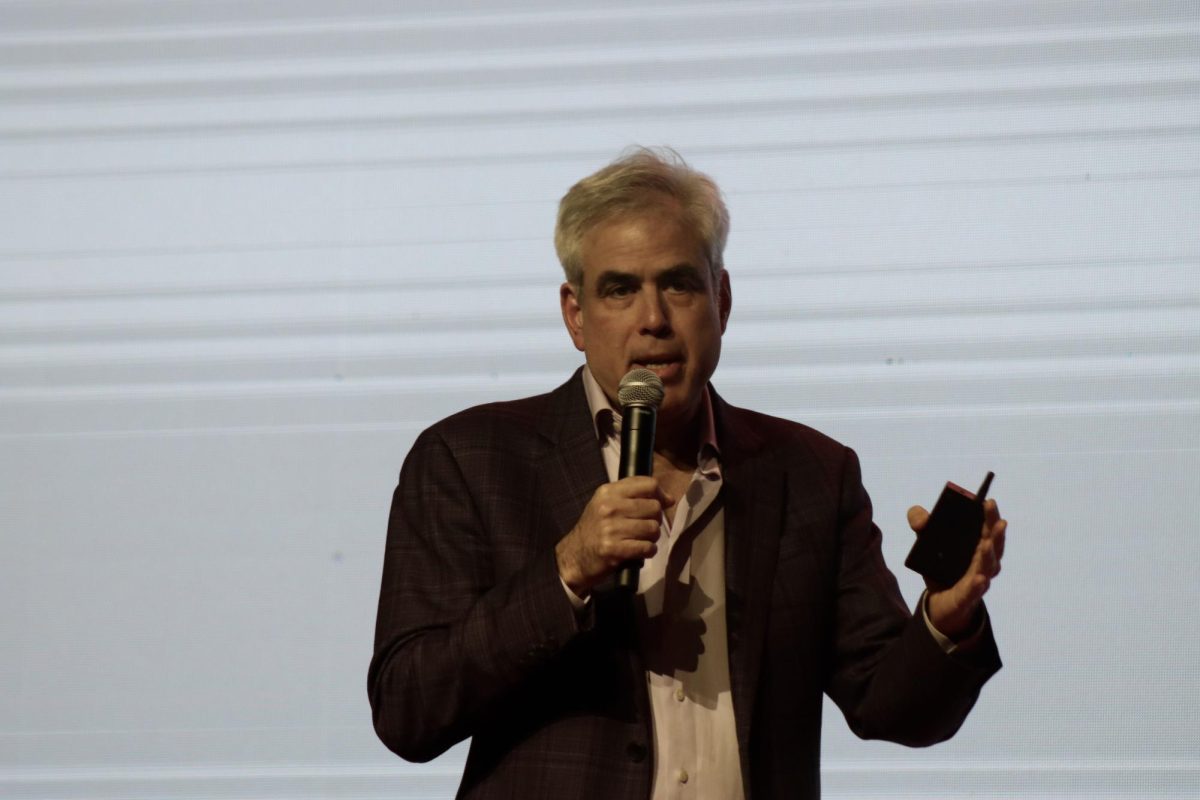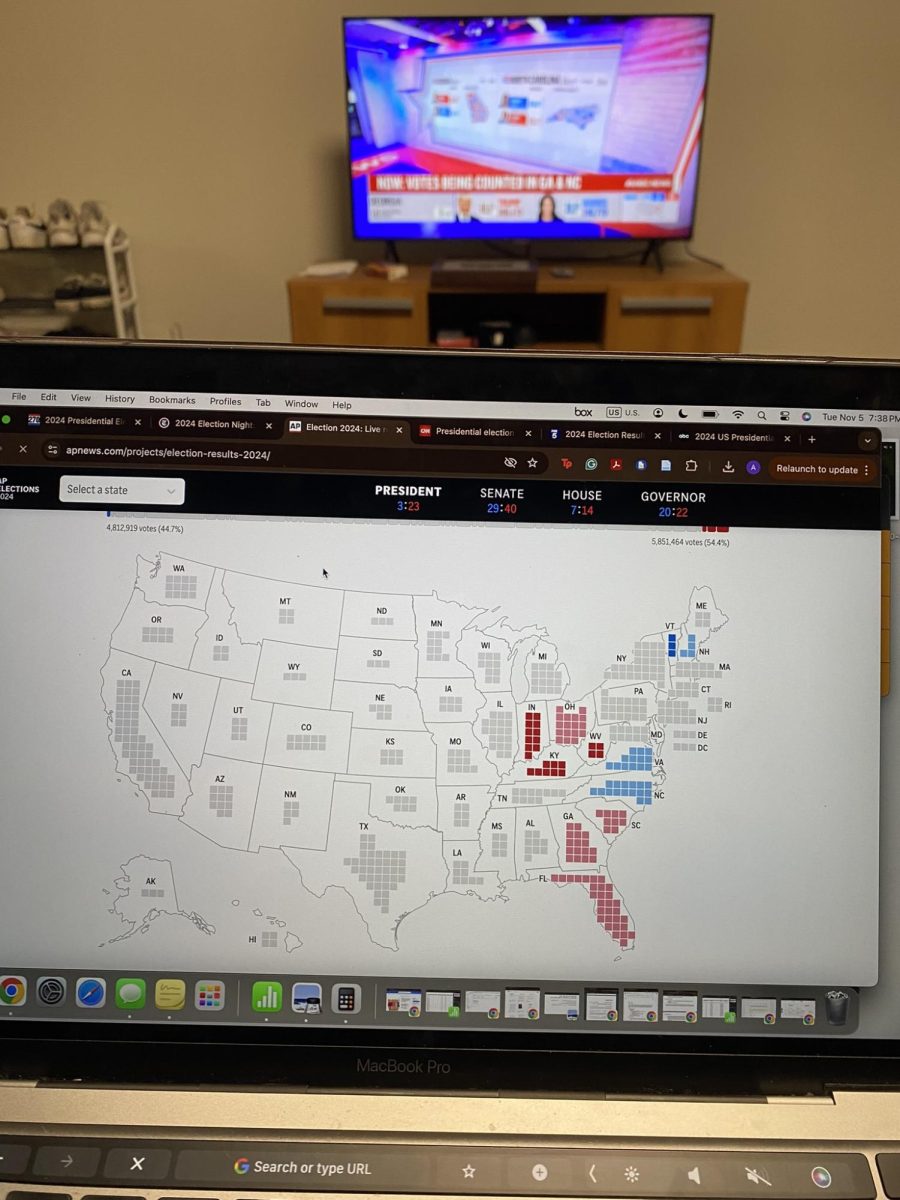In response to my mom’s prodding, I read Jonathan Haidt’s New York Times best-seller, “The Anxious Generation,” and was pleasantly surprised by what I learned. While no one likes to hear a parent or older adult declare the superiority of their generation to ours, recent studies have shown definitively that our generation suffers more from anxiety and depression than previous ones. In his book, Haidt states that this surge of anxiety and depression stems from social media coupled with a cultural shift toward overprotective parenting.
Prior to reading the book, I expected the classic preaching about social media ruining the world and how our generation has been coddled. But to my surprise, I discovered that Haidt lets studies and thorough research speak for him instead of overused cliches.
Haidt writes, “Between 2010 and 2015, rates of anxiety and depression went up in so many countries for Gen Z while older generations were much less affected.”
During this time, depression has become roughly two and a half times more prevalent, he said. This statistic shocked me as I read, and I immediately understood the gravity of the problem facing our society. After shedding light on Gen Z’s current mental health crisis, Haidt shifts his focus to the root causes.
Haidt focuses on the effects social media has on the vulnerable adolescent brain. He argues that social media has affected Gen Z more than other generations simply because we are the first generation to grow up with it. Haidt argues that while other generations benefited from a “play-based childhood,” we have grown up in a “phone-based childhood.”
As his argument develops further, Haidt conveys to his readers why social media is so addictive and harmful to teens and preteens. To name an example, Haidt states that the average teen spends three to four hours on social media and six to eight on all screen-based activities every day. Consequently, Haidt reports that after spending 122 minutes per day with friends in 2012, teens spent only 67 minutes per day with friends in 2019. It’s one thing that phones cause sleep deprivation, but the fact that they are powerful enough to deprive teens of time with friends is frightening.
Besides the opportunity cost of spending time on social media, Haidt states that social media is a cause of depression for girls and not just a correlation.
He adds that girls’ rates of depression have risen higher than those of boys, and they are at high risk of depression, anxiety and the symptoms of each if they start using social media at a young age.
For boys, Haidt states that video games and adult content on the internet are more of the problem. He argues that the internet keeps boys from having valuable experiences in the real world since they can find satisfaction online without social risk. Additionally, Haidt indicates that social media and video games are not helping boys in the classroom, where they are making lower grades on average and earning 18% fewer college degrees than girls. According to Haidt, it is unfortunately those on the middle and lower end of the socioeconomic ladder who are suffering the most in this area.
When it comes to overprotective parenting, Haidt blames a culture shift. The change comes from an emphasis on “safetyism” and “adult solidarity.” Concerning safetyism, Haidt details how parents now prioritize safety over everything else. He criticizes safetyism because it negates a child’s need to be left unsupervised and learn from taking risks.
Haidt argues that when children are given the opportunity to play unsupervised, they learn to look after themselves and solve problems. In fact, Haidt says that more injuries happen when adults are watching because kids depend on the adults instead of themselves. Additionally, Haidt writes that kids are antifragile and need to make mistakes (such as injuries) to learn the skills needed to become a high-functioning adult.
Part of the reason that no adult wants to leave a child unsupervised comes from adult solidarity, Haidt writes: Adults simply trust each other less than they used to. He argues that this mistrust is overblown. According to Haidt, we just believe that it isn’t because we have more news coverage than before and because more isolated incidents have come to light. When I read this passage, I first thought of the phrase, helicopter parent. Although some parents take it to the extreme, I think most parents of our generation hover over their children more than their parents did.
My favorite part of Haidt’s writing is the solutions he provides. Haidt proposes that kids should get smartphones at 14 and social media at 16. He calls for collective action to make this the norm and policy change to raise the age of internet adulthood from 13 to 16. Haidt also suggests that schools should go phone free and give kids more opportunity for unstructured, unsupervised play and hands-on learning. Finally, he advocates for parental neglect laws to be adjusted so that parents have the ability to leave their kids unsupervised within reason.
Although most of Haidt’s writing targets parents, these solutions apply to everyone. In fact, I believe that we, as members of Gen Z at Washington and Lee, can be leaders in this area in the future. While we can’t relive our childhood, we can advocate for change for future generations. You may disagree, but I believe that no 13-year-old needs unlimited access to the internet and social media, and that parents need to give kids at least the freedom (in the real world) that previous generations had. While the arguments of this book do not apply perfectly to everyone, I believe it is worth a read because it addresses some of the most prevalent issues of our time. Haidt has given us a detailed road map, but we have to be the ones to use it.










